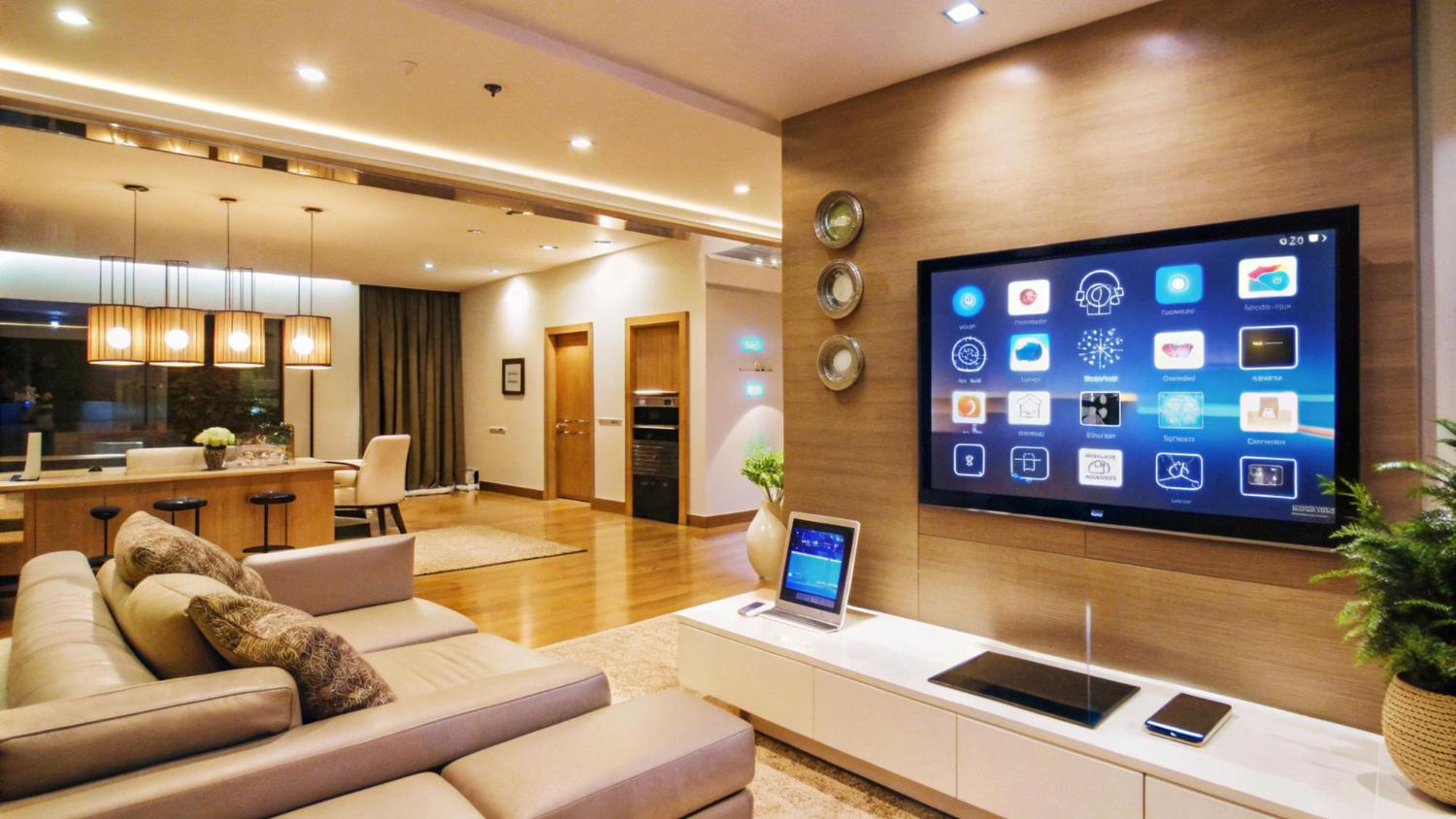Exploring the Rise of the Home Automation System in Canada

Across Canada, the modern household is undergoing a transformation. With rapid advancements in digital technology and a growing demand for comfort, security, and energy efficiency, the home automation system has emerged as a key feature in both new constructions and retrofitted homes. This shift is not merely a trend but a response to evolving lifestyles, environmental awareness, and the integration of smart technology into everyday living.
From managing lights and thermostats to controlling security cameras and household appliances remotely, a home automation system is redefining how Canadians interact with their living spaces. As cities grow denser, rural areas become more connected, and consumers demand more convenience, the adoption of smart technologies in residential environments continues to accelerate.
What is a Home Automation System?
A home automation system refers to a network of electronic devices, sensors, and control systems designed to automate, monitor, and manage various functions within a residence. These systems allow homeowners to control lighting, temperature, security, appliances, and even entertainment setups through centralized platforms—typically via smartphones, tablets, or voice-activated devices.
At its core, the system combines hardware and software to perform tasks that would otherwise require manual intervention. These tasks can be scheduled, triggered by sensors, or controlled in real time from anywhere with an internet connection.
In Canada, where climate conditions, lifestyle demands, and energy concerns are diverse, the functionality and flexibility of a home automation system make it highly appealing across regions and demographics.
Core Components of a Home Automation System
A fully integrated home automation system typically includes the following components:
1. Central Hub or Controller
The brain of the system, a central hub connects all devices and facilitates communication between them. This hub allows users to access and control various functions through a single interface.
2. Smart Lighting
Lighting systems can be programmed to turn on or off at specific times, respond to natural light levels, or react to occupancy. In Canadian homes, smart lighting is particularly useful during long winters and shorter daylight hours.
3. Climate Control
Automated thermostats and HVAC systems help maintain comfortable indoor temperatures while optimizing energy usage. Given Canada's varying climate—from harsh winters to hot summers—climate automation is one of the most valued features.
4. Security and Surveillance
Home automation systems often include smart locks, doorbell cameras, motion sensors, and surveillance cameras. These features enhance safety and allow homeowners to monitor their properties remotely, which is especially useful in urban areas or when traveling.
5. Window Treatments
Automated blinds and curtains can be scheduled or triggered based on sunlight or time of day, helping regulate indoor temperatures and privacy.
6. Appliance Integration
Many household appliances, such as ovens, refrigerators, and washing machines, can be connected to the system. These appliances may notify users when maintenance is needed or allow control from mobile devices.
7. Entertainment Systems
Smart TVs, speakers, and audio-visual components can be integrated into the home automation network, offering a seamless multimedia experience controlled from a central platform.
Benefits of a Home Automation System in Canada
The adoption of home automation systems in Canadian homes is driven by a variety of practical benefits, including:
1. Energy Efficiency
In a country where heating and cooling costs can be significant, energy management is a priority. Automated systems help reduce energy consumption by adjusting lighting, heating, and appliance use based on occupancy, schedules, or environmental conditions.
2. Enhanced Security
Smart security features provide real-time monitoring and alerts, giving homeowners peace of mind. In rural areas, where emergency response times may be longer, or in urban settings with higher foot traffic, these features add a critical layer of protection.
3. Convenience and Comfort
Daily routines become more streamlined when systems respond automatically. From setting the perfect room temperature before arriving home to turning off lights with a voice command, automation adds measurable convenience to modern living.
4. Remote Access
Whether managing a primary residence or a vacation property, remote access through mobile apps allows homeowners to control and monitor their homes from anywhere. This is especially useful for Canadians who travel frequently or own seasonal homes.
5. Support for Aging in Place
Home automation can support aging populations by simplifying tasks, improving accessibility, and enhancing safety. Features such as voice-activated lighting, automated doors, and fall detection sensors contribute to independent living for seniors.
Home Automation and Canadian Housing Trends
Canada’s real estate market continues to evolve, and home automation systems are becoming a standard offering in many new developments. From condominiums in Vancouver and Toronto to custom homes in suburban and rural communities, smart infrastructure is being built into properties from the ground up.
In urban centres, high-rise buildings often include centralized automation for lighting, HVAC, and security, while individual units offer integrated smart systems. In suburban neighborhoods, homeowners are investing in retrofitting older properties with automation to modernize and add value.
Sustainability is also a major factor. Many Canadian cities are implementing green building standards that encourage or require smart energy management systems. Home automation supports these goals by optimizing resource usage and providing actionable data on consumption patterns.
Challenges and Considerations
While the advantages are compelling, implementing a home automation system is not without challenges:
1. Upfront Cost
The initial investment in a home automation system can be significant, depending on the scope and level of integration. While costs are decreasing over time, full-scale automation remains a larger expense for some households.
2. Compatibility Issues
With a wide variety of manufacturers and protocols, device compatibility can be a concern. Ensuring that all devices work together through a single interface may require technical expertise or additional hardware.
3. Privacy and Security
Connected systems collect and transmit data, which raises concerns about privacy and cybersecurity. Canadian homeowners must be cautious about securing their networks, updating software, and understanding data-sharing policies.
4. Learning Curve
For those unfamiliar with smart technology, there may be a learning curve involved in managing and customizing automation systems. User-friendly interfaces and proper training or support can mitigate this issue.
The Role of Home Automation in Rural and Remote Communities
While smart home adoption is often associated with urban living, rural and remote areas in Canada also benefit significantly from home automation systems. In regions with extreme weather conditions or limited access to services, automation provides:
-
Remote monitoring for second homes or cottages
-
Automation of heating systems to prevent freezing pipes
-
Real-time alerts for security breaches or power failures
-
Integration with off-grid systems like solar panels or battery storage
With improved internet connectivity in many rural communities, these systems are becoming more accessible and reliable.
Looking to the Future: Innovation and Integration
The future of the home automation system in Canada will likely involve even greater integration and intelligence. Developments in artificial intelligence, machine learning, and predictive analytics are leading to systems that adapt automatically to user behavior and environmental factors.
Smart homes are also expected to integrate with broader smart city initiatives. As municipalities introduce digital infrastructure for transportation, energy, and waste management, home automation systems may connect to these networks for improved efficiency and responsiveness.
Additionally, automation systems are becoming more voice-enabled, intuitive, and personalized. The user experience is evolving from basic control to proactive service—anticipating needs, managing schedules, and learning routines.
Conclusion
The rise of the home automation system in Canada reflects a broader shift toward smarter, more efficient, and responsive living environments. Whether enhancing comfort in urban condos, managing resources in suburban homes, or providing critical monitoring in rural cabins, home automation is reshaping the Canadian residential landscape.
As technology continues to advance and costs become more accessible, home automation will increasingly become a standard feature in homes across the country. While challenges remain, the benefits of convenience, security, energy efficiency, and future-readiness position the home automation system as a foundational element of the modern Canadian home.








